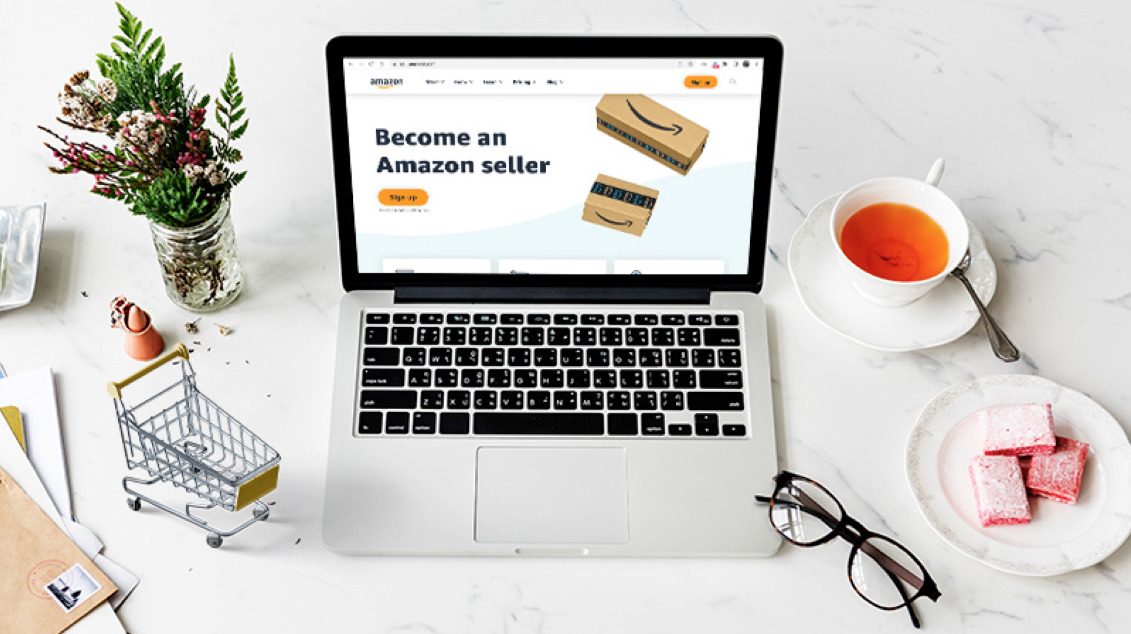In recent years, consumers have made the shift to purchasing online. One of the main reasons is the Pandemic. That’s why selling on eCommerce platforms has become increasingly profitable. There are many platforms that sellers can launch their eCommerce business, such as eBay, Shopify, Walmart, and Etsy. But, I would suggest Amazon as the best platform to make money online.
According to Statista, “In 2021, online retail platform Amazon reported a net income of 33.36 billion U.S. dollars, up from a 21.3 billion U.S. dollar net income in the previous year. During the same fiscal period, the company’s sales revenue amounted to more than 469 billion U.S. dollars.”
One of the most fantastic methods to get started selling on Amazon is through Retail Arbitrage. In the following, you will learn how to get a piece of the Amazon pie.
What is Amazon Retail Arbitrage?
In eCommerce and finance, Retail Arbitrage is a selling method. The process of buying products at a low price from any local retail store and reselling them in another marketplace at a higher price is called Retail Arbitrage. In this way, you will profit from price differentiation.

There are many places to source your products, such as Walmart, Home Depot, Target, and Lowe’s. However, you can find many platforms to sell your products, such as Amazon, Facebook, and eBay. Because of the provided features by Amazon, it is the most popular marketplace.
So, when you buy a product from a physical store and sell it on Amazon at a higher price, you do Amazon Retail Arbitrage.
Pros & Cons of Retail Arbitrage
Each selling method has advantages as well as disadvantages. Here, you can check out the pros and cons of Retail Arbitrage.
Pros:
- Low-Cost Entry
This is very attractive for newbies that they can even start with a bit of money, from $100 to $200. Moreover, as you don’t buy products in large quantities from suppliers, you don’t lose much money in case of failure in selling them.
- Short-term earnings
One of the quickest ways of making money on Amazon is Retail Arbitrage because you don’t need to build a brand or create a lasting relationship with a supplier.
- Simple
As you sell products from established and known brands, you don’t need to put as much time and effort into convincing your customers to trust you.
Cons:
- Lower Margin
Your margins are bound to be lower when you resell a product compared with sourcing directly from a supplier. So your Return Of Investment (ROI) is relatively low because of smaller margins.
- Brand Regulations
Due to protect its customers, Amazon put some restrictions on selling specific brands. This limit also gives brands and private labels a more significant control over their product listing. Therefore, Retail Arbitrage is risky. Because you always need to ask Amazon for approval to be able to sell these brands before listing them. Amazon can ban your account if you sell these gated brands without permission.
- Fuel Cost
For sourcing your products you need to go the physical stores. This brings you extra cost of fuel. As fuel price increases recently, it is not wise and can reduce your profit.
Is Retail Arbitrage Legal in the USA?

Retail Arbitrage is a legit business model in the U.S. Actually, once you legally buy a product and keep it in the same condition as you purchased it, you have the right to resell that product. But, there is a point that you should follow. You have to avoid selling counterfeit products. In addition, not to sell branded products before getting permission from Amazon.
Can Everyone Do Retail Arbitrage?
Retail Arbitrage has a relatively low barrier to entry. That’s why it sounds like something virtually everyone can get into. Every seller can start selling on Amazon by following Amazon’s regulations like gated brand. For selling specific brands and categories, you need to become authorized by Amazon.
How Much Can You Make from Retail Arbitrage?
Actually, the amount of money you make varies among various sellers. It could be between $100 and $50,000. However, many factors can affect your profits. We narrow them down below:
1. Sourcing List
It is essential to find high-demand products at low prices. To reach such products, you have many ways: find your inventory on your own, use an assistant or a team, or buy the sourcing lists. The last option has many benefits for you as it helps you focus on your business and improve your knowledge.
2. Invested capital
Obviously, when you invest more, you can scale up your business faster. So, putting thousands of dollars into your Retail Arbitrage business helps you to have a faster expansion and more profits.
3. Invested time
It is not enough just to put a lot of money into the Retail Arbitrage business. Spending enough time is also necessary to be able to analyze your business, find your mistakes, and improve your knowledge. Finding profitable products from physical stores is very time-consuming. However, there is a solution for that. You can use retail arbitrage apps like Amazon Seller App, ScanPower, Spotify, and Profit Bandit for product sourcing.
How to Start Doing Retail Arbitrage?

You have to follow the below steps to kickstart your Retail Arbitrage business:
1. Create an Amazon seller account
First of all, you need to create an Amazon seller account. You can choose among two available options: Individual and Professional.
-
Individual seller account
You can create an individual seller account for free. But, Amazon charges you $0.99 for every single sale that you make. This fee is in addition to a 15% consolidated fee on those sales. There is 40 sales limitation for you as an individual seller. Besides, you can not sell products from restricted categories.
-
Professional account
For this option, you should pay a monthly $39.99 subscription fee. Additionally, there are also referral fees and variable closing fees. Besides, you can sell more than 40 products on Amazon. Here, you can sign up for FBA (Fulfillment by Amazon) method for little money or select FBM (Fulfillment by Merchant). Using the FBA method, you access Amazon’s warehouses, apart from providing storage, packaging, shipping, and customer support. FBA sellers also stand a greater chance of winning the Buy Box and are eligible for Prime delivery.
2. Source your products
Different tools and softwares available in the market can help you with product research, but the best one is the Amazon seller app. With your Amazon seller account, you can use it for free. It has many features such as:
- Scanning product barcodes
- Listing products on Amazon
- Checking a product’s profitability
- Monitoring your sales
- Answering customer messages
- Managing orders and returns
- And much more
3. List your product and start selling
Once you find suitable products for selling on Amazon, you can list them in your inventory and start selling. You have to optimize your product listing and keep repricing them to make your inventory competitive and win the “Buy Box.”
Final Thoughts
Although it sounds easy to start selling on Amazon using Retail Arbitrage, it needs a lot of hard work to become successful. You don’t get a profit from every product you buy on clearance sale. Apart from finding profitable products, It is critical to do repricing and listing optimization.
Source: OABeans


































